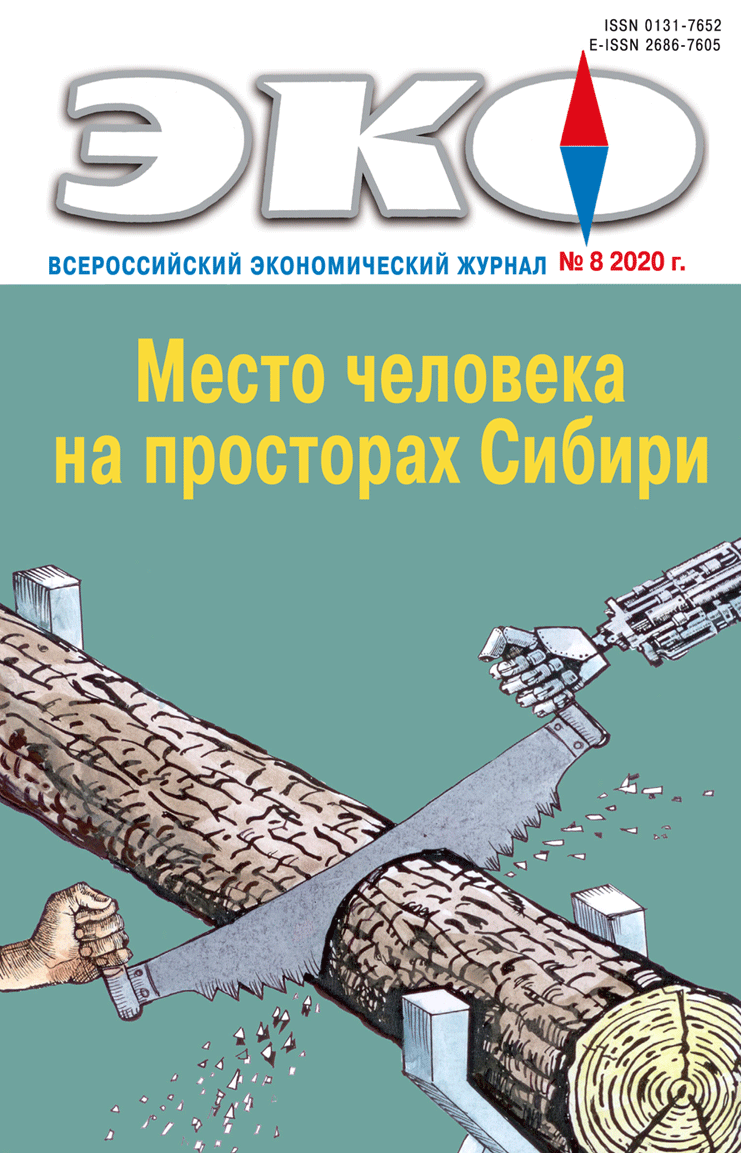ECONOMIC HISTORY OF RUSSIA
“General Purge” of the State Apparatus in 1929–1932 as Manifestation of a Party State legitimacy Crisis
Published 2020-08-08
Keywords
- ‘general purge’ of state apparatus,
- legitimacy of power,
- doctrinism,
- pragmatism,
- protectiveness
- sociopolitical mobilization ...More
How to Cite
1.
Krasilynikov С. “General Purge” of the State Apparatus in 1929–1932 as Manifestation of a Party State legitimacy Crisis. ECO [Internet]. 2020 Aug. 8 [cited 2024 Dec. 27];50(8):164-92. Available from: https://ecotrends.ru/index.php/eco/article/view/4095
Abstract
During the post-revolutionary phase, the Soviet state transformed into a terrain of “permanent purges”, different in their purposes, forms and results, which have established a bridgehead for discrimination overgrowing into a state repressive system. Soviet propaganda and scientific discourse assessed “purges” as a tool of necessity to raise the professional level of the administrative apparatus. In current studies, a “general purge” is typified as one of the mechanisms to strengthen the Stalin’s regime. The paper substantiates the approach to administrative “purges” at the time of the “Great Turn” in the context of studying the systemic crisis of legitimacy of Party institutions in their relation with core social groups. The main intent of administrative “general purge” was to retain the power of the “corporate core” of oligarchic-type (manifestation of protective function) by means of sociopolitical mobilization of the confrontational type with multidirectional vectors. Therefore, new groups were drawn into the management sphere from the principal social basis (through “proletarianization”, “system of promotion”) and simultaneously it was accompanied by elimination of the so-called “former”, “non-Soviet”, “old” specialists. Thereby, both the officially announced goal (raising the level of managerial effectiveness of the government and enhancing its social legitimacy) and the hidden aim (securing its own bureaucratic core of power in spite of high personnel turnover and drop-out) proved out of reach. The conflict of principles of doctrinism and pragmatism during this campaign undercut its effectiveness as a crisis-response measure.References
- Великанова О. В. Разочарованные мечтатели: советское общество 1920-х годов. М.: Политическая энциклопедия, 2017. 295 с.
- Волков С. В. Интеллектуальный слой в советском обществе. М.: НОФ «Развитие», 1999. 250 с.
- Голиков Ю. И. Генеральная «чистка» советского аппарата Сибири в конце [19]20-х – начале 30-х гг. // Дискриминация интеллигенции в послереволюционной Сибири (1920–1930-е гг.). Новосибирск, 1994. С. 181–210.
- Киселева Е. А. Чистка государственного аппарата 1929–1932 годов // Российская история. 2009. № 1. С. 96–101
- Мертон Р. К. Непреднамеренные последствия преднамеренного социального действия // Социологический журнал. 2009. № 2. С. 5–17
- Морозов Л. Ф., Портнов В. П. Органы партийно-государственного контроля (1923–1934 гг.). М.: Юридическая литература, 1964. 223 с.
- Пыстина Л. И., Голиков Ю. И. «Спецы» // Маргиналы в социуме. Маргиналы как социум. Сибирь (1920–1930-е гг.). Новосибирск: Сибирский хронограф, 2004. С. 165–199, 398–406.
- Соколов А. К. Советы: от власти иллюзий к иллюзии власти // Формирование административно-командной системы в 1920–30-е годы. М., 1992. С. 165–185.
- Фельдман М. А. Выдвиженцы 1917–1941 гг.: проблематичность восходящей мобильности // Социологические исследования. 2020. № 6. С. 94–103.

